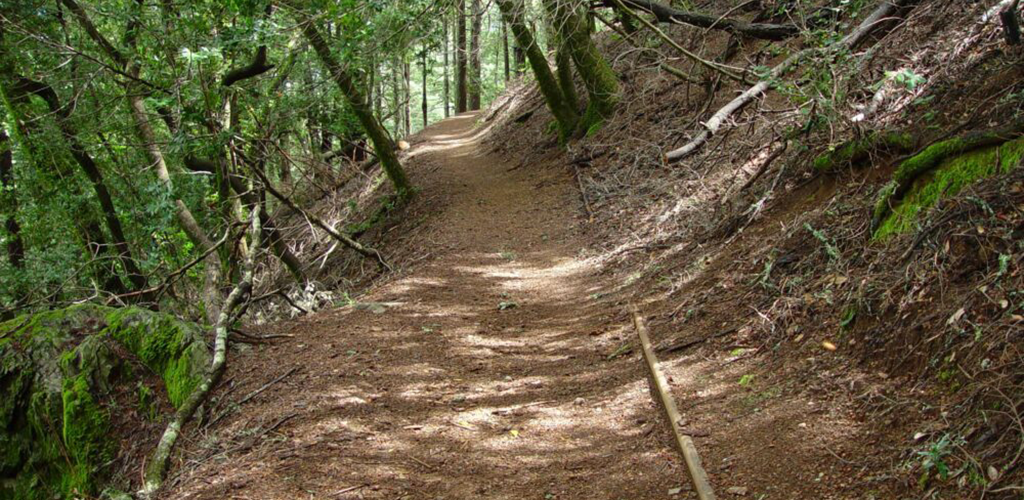Coweta Dip

The Coweta, or Grade, Dip is highly promoted as an element of “sustainable” construction for new hiking trails. It is more easily maintained because, if it’s appropriately situated and properly constructed, it will (usually) require far less maintenance than that of a water bar. In fact, water bars can be replaced by coweta dips—if properly situated.
This technique is possible only on sidehill trails, where one side of the trail can discharge water downhill.
 These are usually installed during trail construction, when a continuous uphill grade may be interrupted by short 10- to 15-foot-long and 2- to 3-foot-deep downhill grades. Water flowing down the trail is forced to leave the treadway at the dips.
These are usually installed during trail construction, when a continuous uphill grade may be interrupted by short 10- to 15-foot-long and 2- to 3-foot-deep downhill grades. Water flowing down the trail is forced to leave the treadway at the dips.
 The coweta dip is a permanent, “maintenance-free” drainage technique. On gentle trail sections, coweta dips may be added successfully after construction by using wire flags to lay out a dip above an anchor point, such as a tree or boulder, then digging it out as in new construction.
The coweta dip is a permanent, “maintenance-free” drainage technique. On gentle trail sections, coweta dips may be added successfully after construction by using wire flags to lay out a dip above an anchor point, such as a tree or boulder, then digging it out as in new construction.
Procedure
This requires a lot of digging!
- Start 15 feet above the point where you want the grade to dip back up slightly.
- Cut down—lower—the outside edge throughout the length of the dip.
- Gently grade the cut mineral soil back to the up-slope side, spreading it along the 15 feet of the coweta dip.
- Ensure that the cutbank (uphill) is back-sloped by about 45%.
- Completely remove all duff from the construction area.
- Grade the tread so that it is out-sloped downhill from the cutbank by 1-3%!
- Using the tried-and-true, “Mark–1 Mod–A”-eyeball method, grade the tread up by 10% from the lowest point of your coweta dip.
- From the lowest point of the dip, grade gently back up on a 10% grade to the apex of the lower berm.
- “Sift” the mineral soil from side-to-side and lengthwise to find and remove bumps and humps that will catch rain water and hold it on the tread.
- Pack dirt tightly with a McLeod.
- Ensure the drain flows down-slope widely and openly so that rain water disperses, or sheets, off of the tread quickly without backing up and flooding the trail.
This should form an area more or less shaped like a pork chop with the bone as the trench and the small end forming the drain.
 Overview of a Successful Coweta Dip project
Overview of a Successful Coweta Dip project
Leaf Litter

Question: Why do maintainers scatter dead leaves over trail treadway? Because it controls splash erosion.
Scatter leaf litter over the new tread in the coweta dip—If the soil is very dry, walk over the leaf-littered tread in the dip several times.
 South Shenandoah
South Shenandoah